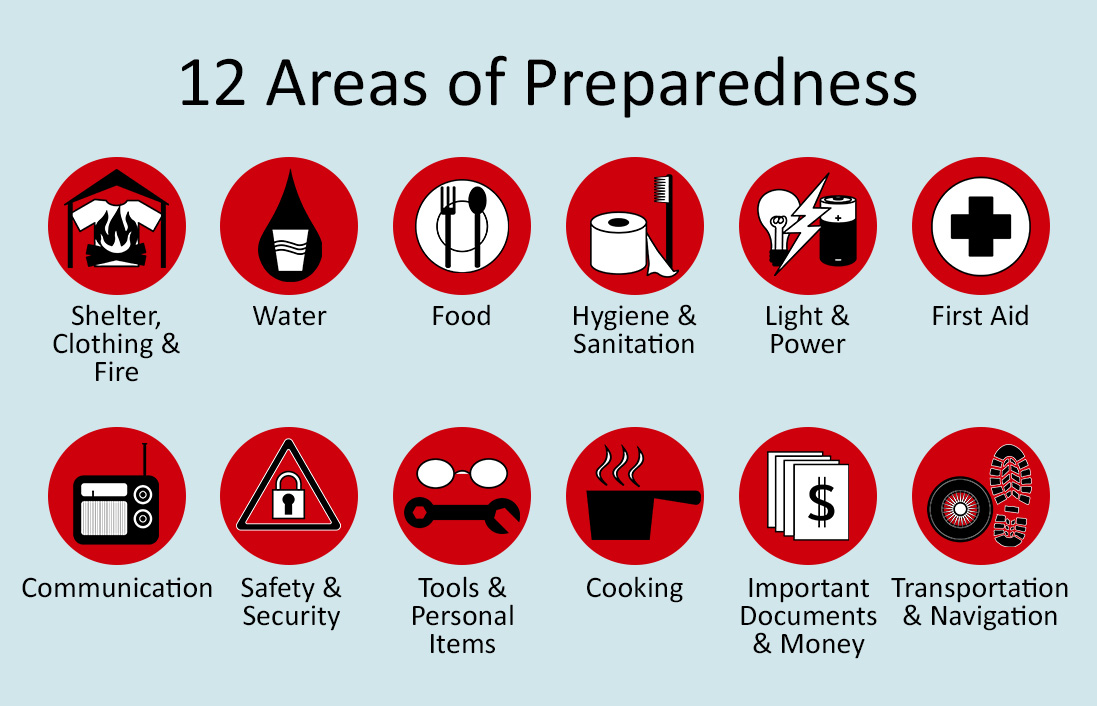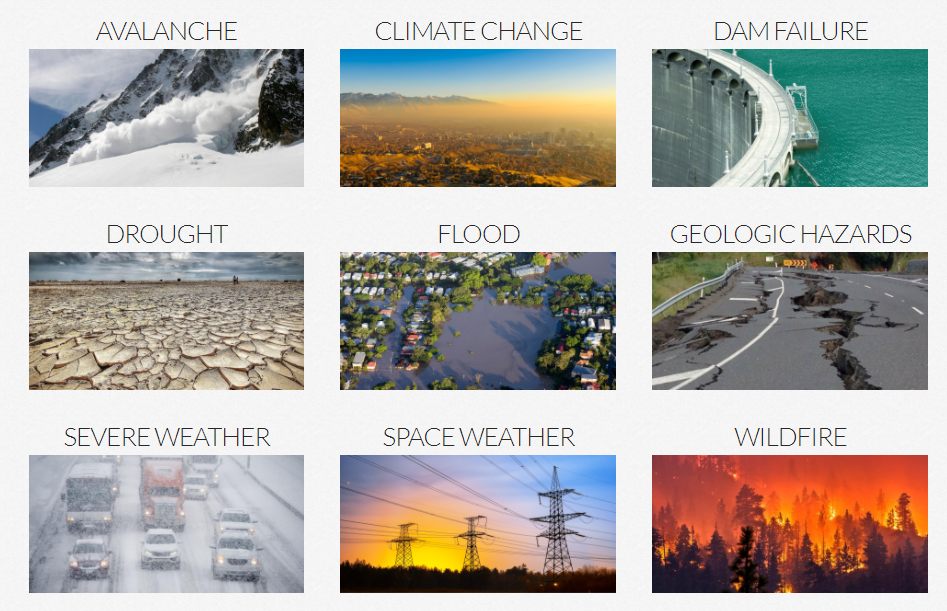Be Informed: Family
The Point
Knowledge is power. When it comes to emergency preparedness and disasters, families will be better off if they've done their homework. Some things to learn are the hazards in the area and the protective actions for those hazards, how people will be notified in a disaster, and what other resources may be available in a disaster response.
Learn more about emergency preparedness by watching the Be Ready Utah training videos on YouTube.
Do This
- Identify the predominant hazards where you live.
- Learn, practice and teach the protective actions to survive those hazards.
- Identify and register for, or opt in to, the warning systems used in your area.
- Sign up for information by texting UtahQuake to 43362.
- Bookmark this website, dem.utah.gov, shakeout.org/utah, and earthquakes.utah.gov.
- Watch the Be Ready Utah PrepCasts.
Videos
Downloads
Be Informed
Knowledge is power, especially when it comes to emergency survival. Take the time before emergencies occur to learn about the risks you face, the protective actions that will save you from those hazards, and how you will receive emergency information in times of disaster. The lives of you and your family may depend on it.
Because of its varying climate and terrain, Utah can experience a variety of disasters. Wildfires can strike during the hot, dry summer months and severe storms during the winter season can blanket parts of the state, causing power outages and increased avalanche danger. Despite these risks, there are steps each Utahn can take to ensure they are prepared. It’s important to be informed about Utah’s hazards so you can be ready for the unexpected.
Utah Hazards
See the interactive hazard maps on the Utah Hazards page to discover what natural hazards are near you. Beyond natural hazards, consider what you would need to do if any failures happened to the technology you are connected to. (ex. power outage, waterline break, sewer line break or back-up, gas line rupture, etc.) Here is a quick list of some of the hazards Utah can experience:
- Winter Storms: This varies yearly, but Utah receives storms with plenty of wind, cold temperatures, and snow.
- High Winds/Tornados: Utah has high winds and micro-burst winds that cause damage and uproot trees, but we didn’t think we had many tornados until an F2 ripped through downtown Salt Lake City in August of 1999. It lasted ten minutes, killed one person, injured more than 80 people, and caused more than $170 million in damages. Tornados happen in Utah. We average two a year.
- Lightning Strikes: Utah experiences around 200,000 cloud-to-ground lightning flashes each year. It is the leading weather-related cause of death in Utah.
- Wildland Fires: 70% of wildfires in Utah are human-caused costing tens of millions of dollars.
- Structure Fires: Most of these can be prevented with basic fire safety and reducing the hazards in one's own home.
- Floods: The most common and most expensive of all natural disasters in Utah. Even homes outside of designated flood plains are at risk.
- Earthquakes: About 1,500 earthquakes are located in Utah each year, including aftershocks. The largest earthquakes expected in Utah are in the magnitude 7.0-7.5 range, which takes place about every 150 years.
- Thunderstorms: Can have multiple hazards including wind, rain, lightning, hail, and flooding.
- Landslides/Mud Flows: When inclined land becomes over-saturated with water. This often happens in areas that previously experienced wildfire. One reason our flood experts say not to have bedrooms in the basement.
- Hazardous Materials Incidents: Every day the roads, rails, and skies in Utah are used to transport hazardous materials. We also store hazardous stuff as part of our modern society.
- Biological Contamination: Whether intentional or not, contamination can spread through the air, water, and direct contact. A common example is a boil water notice.
- Other Technological Threats: Infrastructure failures, dam failures, bridge collapses, cyber threats, etc.
- Terrorism/Active Shooter: An unfortunate part of our world.
- Civil Unrest: Possible when the populace becomes angry or scared.
- Pandemic: Remember 2020.
Check out Utah's disaster history.
Hazard Impacts
What impacts will the hazards in the previous section cause? Preparing for the impacts is what we are really preparing for. For example, what impacts could an earthquake cause? How would it affect your every day? Power outage? What about water contamination? Loss of shelter? Think about the impacts a large magnitude earthquake, hitting where you live, could cause. Also, think about other hazards that the earthquake could cause and the short-term and long-term impacts.
- Power outage: Shaking ground means toppled power poles and broken power lines. Surges can also cause transformers to catch fire and explode. Plan for the possibility of no power.
- Water/sewer broken: You can only survive three to four days without clean drinking water. If hygiene and sanitation issues are not addressed, severe disease will run rampant in a few days as well. Plan for the possibility of your water and sewer not working.
- Natural gas disruption: You use it for heating and cooking, but underground pipes can be broken. Plan for the possibility of your natural gas not functioning or leaking.
- Transportation hampered: Whether the roads are blocked, bridges and overpasses are collapsed, or your own vehicle is inoperable, plan on the possibility of not having the same transportation options you are used to.
- Infrastructure disabled: All of the things that make our modern society run smoothly may be disabled. Plan to possibly not have the infrastructure you now use every day.
- Communication breakdown: Usually the first thing lost in an emergency situation. Phone lines and mobile towers could be broken, knocked out, or jammed. Radio and television stations could be offline. Plan for the possibility of not having your normal means of communication.
- Lack of shelter: Lack of shelter – You may need to evacuate your home because it is unsafe or at the least, your HVAC system may no longer be working to keep you warm or cool. Plan for the possible need for other arrangements for shelter.
- Economic downturn: When nothing can move and no one can buy, it’s inevitable that the economy suffers as well. Plan for the possibility of financially difficult times.
- Mental & emotional strain: People will be experiencing very difficult loss. Communities and even the rescuers may be pushed to their limits. Plan ways for you and your family to cope with the stress.
- Supply chain disrupted: If the roads are impassible, store shelves empty quickly. Plan for the possibility of not being able to go shopping for supplies.
- Lack of health & medical: If they are even operational, medical services will be overwhelmed. Plan for the possibility of limited outside medical help.
- Lack of safety & security: There could be a lot of new hazards from broken glass and toppled furniture, even in your own home. Unfortunately, disasters can also bring out the worst in people. Law enforcement and fire/rescue will be overwhelmed. Plan to be situationally aware.
- Lack of government services: If you rely on government services for financial support or other assistance, those services could be disrupted. Plan for the possibility of not having that help for a time.
Protective Actions
Once you know what hazards are in your area and the impacts they can cause, you need to learn and practice the protective actions associated with them. Protective actions are the immediate actions taken to protect yourself and others from the initial impact of a hazardous incident. If you don't know how to survive the disaster, then the rest of your plans don't really matter. Visit the Protective Actions webpage to learn what to do to protect yourself and others from the initial impacts of hazardous incidents.
Reliable Sources of Information
Identify and register for, or opt in to, the warning systems used in your area. Call your local Emergency Manager to find out more about your local warning systems. Here are some examples:
- Emergency Alert System
- Mobile phone (WEA)
- Local alert systems
- Highway message boards
- Tone alert radios
- Route alerting
- Sirens
- Text groups/email
- Social media/internet
These will vary from jurisdiction to jurisdiction. But they main point is to know how you will receive emergency instructions and other emergency public information. Where are the shelters? Where can I get food and water? Can I stop boiling water? Etc.
Sign up for earthquake tips and alerts by texting UtahQuake to 43362.
Practice
Practicing your plans and practicing using your tools helps you be informed. Hold fire drills, evacuation drills, earthquake drills. Make a disaster supply kit dinner.
Take it one piece at a time, and remember, it's never too late to prepare... untill it is.
Cybersecurity
Cybersecurity


